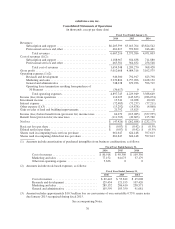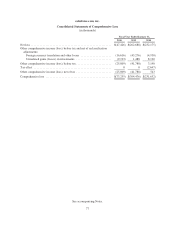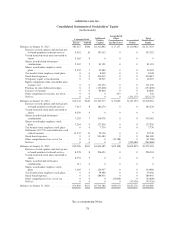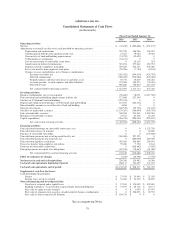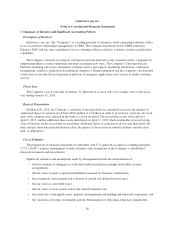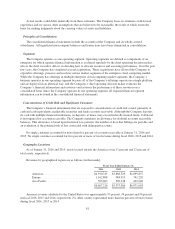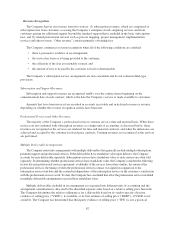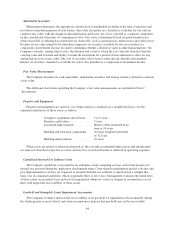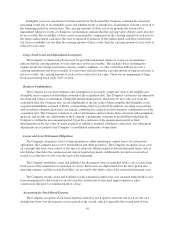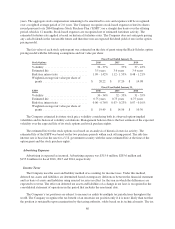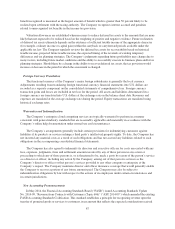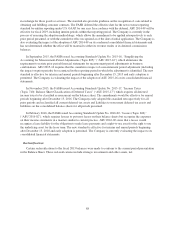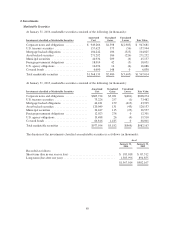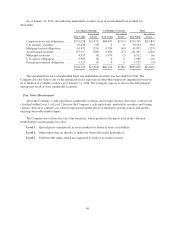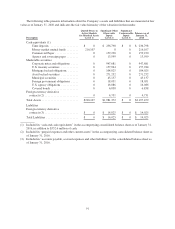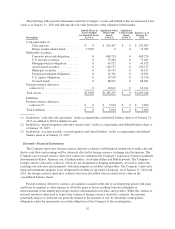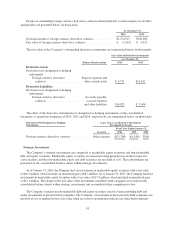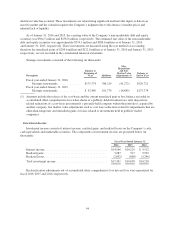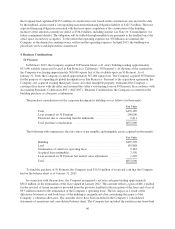Salesforce.com 2016 Annual Report Download - page 93
Download and view the complete annual report
Please find page 93 of the 2016 Salesforce.com annual report below. You can navigate through the pages in the report by either clicking on the pages listed below, or by using the keyword search tool below to find specific information within the annual report.
years. The aggregate stock compensation remaining to be amortized to costs and expenses will be recognized
over a weighted average period of 2.0 years. The Company recognizes stock-based expenses related to shares
issued pursuant to its 2004 Employee Stock Purchase Plan (“ESPP”) on a straight-line basis over the offering
period, which is 12 months. Stock-based expenses are recognized net of estimated forfeiture activity. The
estimated forfeiture rate applied is based on historical forfeiture rates. The Company does not anticipate paying
any cash dividends in the foreseeable future and therefore uses an expected dividend yield of zero in the option
pricing model.
The fair value of each stock option grant was estimated on the date of grant using the Black-Scholes option
pricing model with the following assumptions and fair value per share:
Fiscal Year Ended January 31,
Stock Options 2016 2015 2014
Volatility ............................. 32-37% 37% 37-43%
Estimated life ......................... 3.5years 3.6 years 3.4 years
Risk-free interest rate ................... 1.09 - 1.42% 1.12 - 1.53% 0.48 - 1.21%
Weighted-average fair value per share of
grants .............................. $ 20.22 $ 17.20 $ 14.08
Fiscal Year Ended January 31,
ESPP 2016 2015 2014
Volatility ............................. 30-34% 32-35% 31-35%
Estimated life ......................... 0.75 years 0.75 years 0.75 years
Risk-free interest rate ................... 0.06 - 0.76% 0.07 - 0.23% 0.07 - 0.10%
Weighted-average fair value per share of
grants .............................. $ 19.49 $ 14.56 $ 10.30
The Company estimated its future stock price volatility considering both its observed option-implied
volatilities and its historical volatility calculations. Management believes this is the best estimate of the expected
volatility over the expected life of its stock options and stock purchase rights.
The estimated life for the stock options was based on an analysis of historical exercise activity. The
estimated life of the ESPP was based on the two purchase periods within each offering period. The risk-free
interest rate is based on the rate for a U.S. government security with the same estimated life at the time of the
option grant and the stock purchase rights.
Advertising Expenses
Advertising is expensed as incurred. Advertising expense was $315.6 million, $203.6 million and
$155.8 million for fiscal 2016, 2015 and 2014, respectively.
Income Taxes
The Company uses the asset and liability method of accounting for income taxes. Under this method,
deferred tax assets and liabilities are determined based on temporary differences between the financial statement
and tax basis of assets and liabilities using enacted tax rates in effect for the year in which the differences are
expected to reverse. The effect on deferred tax assets and liabilities of a change in tax laws is recognized in the
consolidated statement of operations in the period that includes the enactment date.
The Company’s tax positions are subject to income tax audits by multiple tax jurisdictions throughout the
world. The Company recognizes the tax benefit of an uncertain tax position only if it is more likely than not that
the position is sustainable upon examination by the taxing authority, solely based on its technical merits. The tax
86


